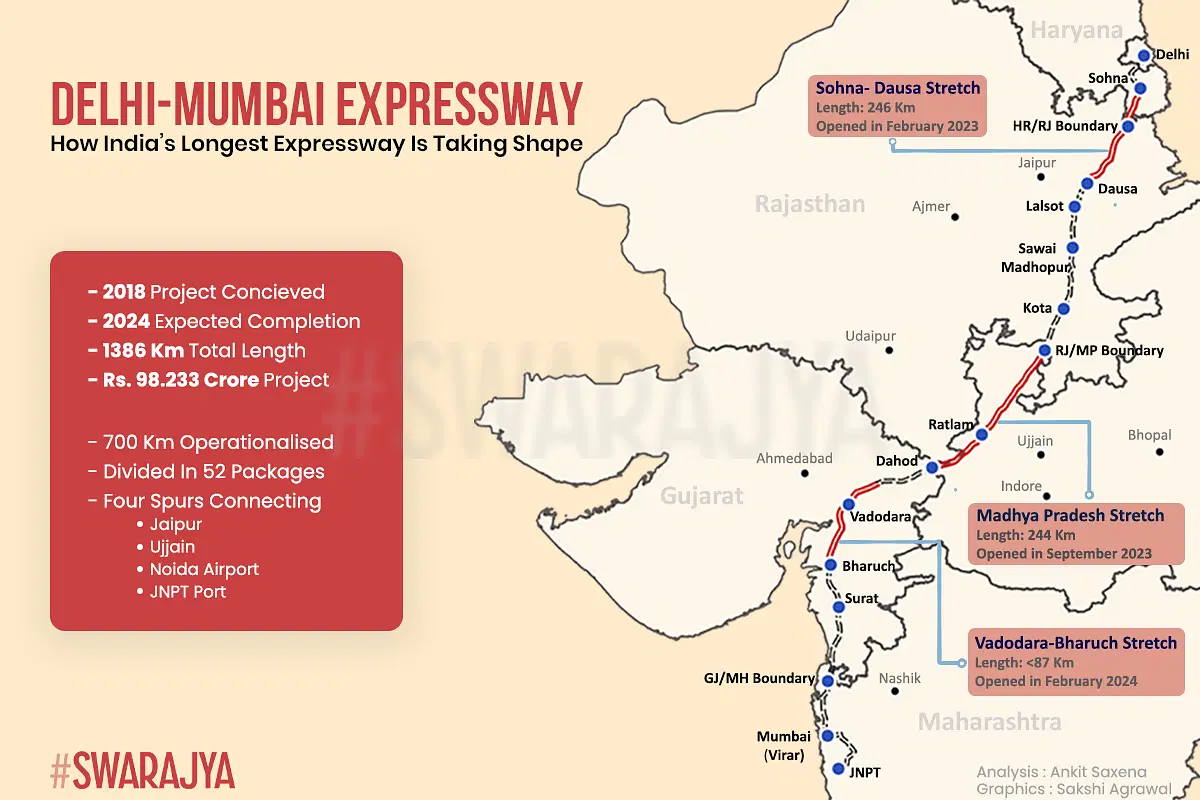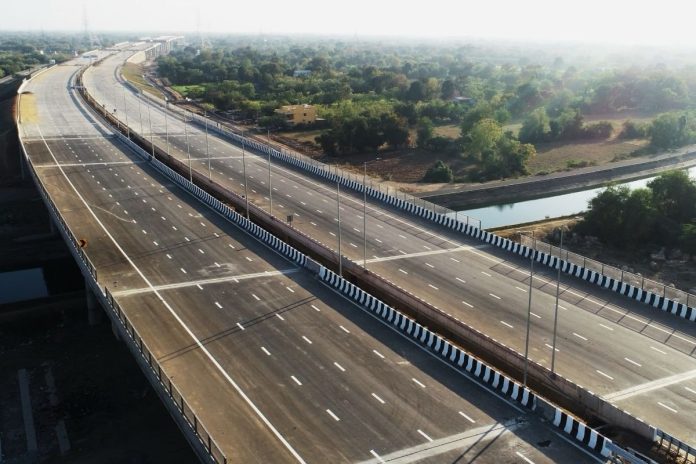As much as 82 per cent of the physical work on the construction of the 1,386 km Delhi-Mumbai Expressway has been completed as a cumulative length of 1,136 km has been built as of June this year, Union Minister for Road Transport and Highways Nitin Gadkari said in a written reply to a question in the Rajya Sabha recently.
India’s longest expressway has been steadily advancing, with various segments becoming operational since its foundation stone was laid in 2019.
This road is designed to directly link the national capital city of Delhi with the financial hub of Mumbai, linking multiple economic centres across five states, namely, Haryana, Rajasthan, Madhya Pradesh, Gujarat, and Maharashtra.
Prior to this, as its latest milestone, Prime Minister Narendra Modi inaugurated the Vadodara-Bharuch section of the Delhi-Mumbai Expressway on 22 February 2024.
Covering a distance of 87 km, this segment will connect key logistics hubs in Vadodara, leading to significant economic development in the Bharuch and Ankleshwar regions.
In its entirety, the eight-lane greenfield expressway spans a length of 1,386 km as it aims to slash the travel time between Delhi and Mumbai by 50 per cent, reducing it to just 12 hours.
Beyond connecting the two major cities, it is intended to improve accessibility to economic hubs such as Jaipur, Kishangarh, Ajmer, Kota, Chittorgarh, Udaipur, Bhopal, Ujjain, Indore, Ahmedabad, Vadodara, and Surat.
The operations for this expansive road marvel began with the inauguration of its first segment between Sohna (Haryana) and Dausa (Rajasthan) by Prime Minister Narendra Modi on 12 February 2023.
This 246 km stretch has emerged as a vital connectivity artery, significantly reducing travel time from Delhi to Jaipur to just two hours.
One year has passed since the launch of the initial segment, and over its course, several segments have also become operational — including the 244 km stretch in Madhya Pradesh, which will serve as a direct conduit to New Delhi and Mumbai for several industrial and emerging regions of the state.
Additionally, in Gujarat, adding to the recently inaugurated stretch, the Vadodara stretch of the expressway was also opened in October 2023.
From 2023, till date, nearly 700 km of the expressway is operational in different stretches across Haryana, Madhya Pradesh and Gujarat.
As the development of separate stretches of the expressway continues to advance, bringing the project closer to completion, here is a map to illustrate the overall progress of the project till March 2024.

(Also read on the progress from 2022)
With this progress, the overall expressway is expected to be completed by end of 2024.
Next, the government is expediting the work to make the overall Delhi-Surat stretch operational in March with two additional spans of over 300 km.
For this, 100 km section between Vadodara and Ankleshwar is almost ready. Another 205 km stretch in Rajasthan, between Lalsot and Jhalawar, is also reaching completion.
As India undergoes a significant expansion of expressways, spanning across states and establishing economic corridors, the Delhi-Mumbai expressway emerges not only as a means to enhance travel convenience but also as a catalyst for broader economic benefits.
This project is set to positively impact 93 PM Gati Shakti economic nodes, 13 ports, eight major airports, and eight multi-modal logistics parks.
Additionally, it will facilitate convenient access to upcoming greenfield airports such as Jewar Airport, Navi Mumbai Airport, and the JNPT port.


